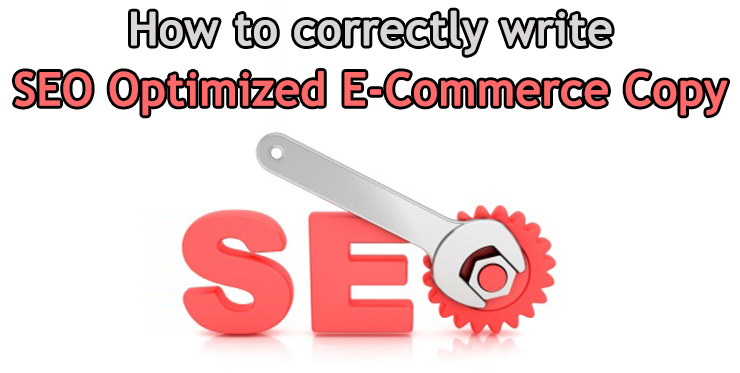For e-commerce sites, there is nothing more important than SEO.
Correct SEO (the foundation of which is content) ensures that your site will show up in search results rather than being lost at the bottom of the metaphorical stack.
This, in turn, means that you can convert more views to sales and draw more customers to your products.
“But how exactly do I correctly write SEO optimized e-commerce copy?” you might ask.
Don’t worry. We are here to help. Read on to learn more.
4 Methods to Ensure You Have SEO Optimized E-Commerce Content
Although SEO is a domain typically inhabited by marketers, it knows no bounds of importance within the e-commerce world. It is not enough for an e-commerce site to simply list its products. Instead, it needs to optimize its pages for SEO in order to produce better indexing results and draw more customers.
It is worth noting, however, that since e-commerce sites generally feature many pages and a virtual Ferris wheel of shifting products, these sites face specific SEO challenges that don’t pertain to other web-based platforms. As such, many e-commerce sites commit a variety of common SEO errors. Be sure to pay attention to the following to ensure your SEO is all that it can be.
1. Pay Attention to Your Product Descriptions & Make Sure You Include a Good Amount of Text
In addition to being important for customers who might want to purchase your product, product descriptions serve an important SEO purpose. Products that do not feature any text accompanying the product itself are virtually ruled out of appearing in a search engine’s top ten results. Search engines cannot see pictures so companies truly cannot afford to underestimate the importance of a great product description.
SEO focused product descriptions should feature plenty of unique content and a word count that exceeds the page’s “default” word count. Whatever you do, though, it is important to avoid copying a product description directly from another website, even if the product is very similar or an exact twin. Doing this will downgrade your site in Google’s indexes and will actually hurt your SEO efforts more than helping them.
To make matters worse, if you decide to copy a product description directly from a manufacturer, Google will completely ban your site from search engines, thus guaranteeing that the site never shows up in online queries – a very serious result for an e-commerce business. Google has made a host of recent updates aimed at downgrading duplicate content and rewarding original content with higher search listings so be careful to do your homework and create original content for each and every product description you write. A solid 50% of avoiding SEO mistakes in e-commercecomes down to refusing to copy and paste and, instead, creating unique, helpful original content.
2. Include Product Reviews
Buyers who shop on e-commerce sites put a great deal of confidence in buyer reviews and may even turn to previous product reviews in order to determine whether or not they should purchase a product. That being said, it is incredibly important to include product reviews on your product’s home page.
In addition to being good for buyers, review pages also have a higher chance of ranking well in search engine results than actual selling pages do. For this reason, including customer-generated reviews on your site will help your boost your SEO ranking and also help keep your pages vibrant, current and interactive, all of which lead to increased sharing, recommendations and linking which, in turn, lead to increased ranking in search results pages.
3. Use Keywords to Optimize Pages
Keywords are a huge SEO tactic and, when used correctly, they have the potential to give your site a huge boost in the search engine rankings. If your product is listed under the keyword “self-help book” but the top searched keyword is actually “self-help, weight loss,” it would serve you well to adjust your keywords accordingly.
Doing this means that your product will appear in search results more often and that clicks will convert to sales more frequently. You can further beef up your keywords by using model numbers and brand names and avoiding keyword stuffing in your pages and product descriptions, which will only hurt your SEO ranking and lead to downgraded pages.
4. Optimize Your URLs
Learning to correctly write SEO content for your e-commerce pages can be an intricate process and, when you’re searching for rankings, everything from product descriptions to urls matter. In order to make your urls keyword-friendly, it is important to ensure that each of your product’s urls are speaking urls, which means that they have been optimized for both SEO and human readability.
Consider the difference between “https://wiki.typo3.org/457153048H65″ and “https://wiki.typo3.org/RealURL.” The latter URL offers readers the name of the page rather than a hard-to read ID number and also serves the purpose of embedding important keywords to make the page easier to find for search engines.
Conclusion: Format Your E-Commerce Copy for SEO & You’re Off To the Races
By now, it’s obvious that correctly formatted e-commerce copy can go a long way toward boosting the success of your e-commerce business and converting clicks to sales. Fortunately, it’s not difficult to re-format your e-commerce copy to be optimized for SEO.
By focusing on including original, informative, dense product descriptions, speaking urls, keywords and plenty of customer-generated product reviews, you can ensure that your page ranks in search engine indexes, despite the ever-changing climate of SEO.
___
by Julia Spence-McCoy
